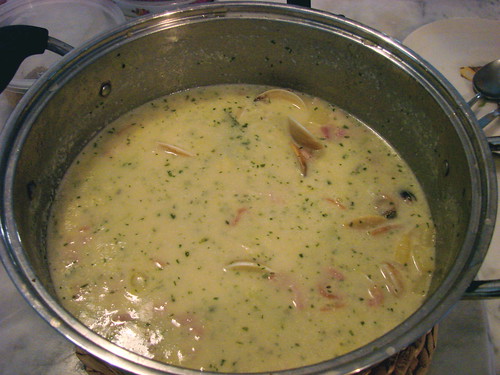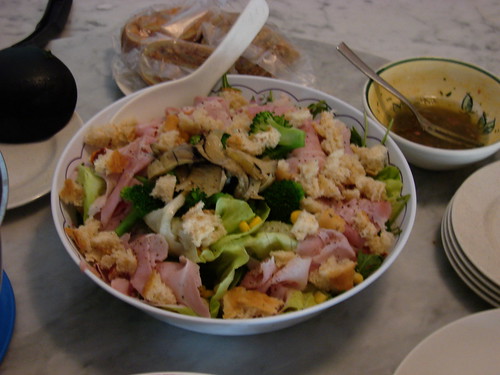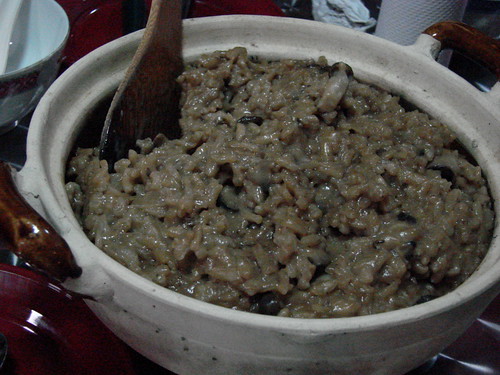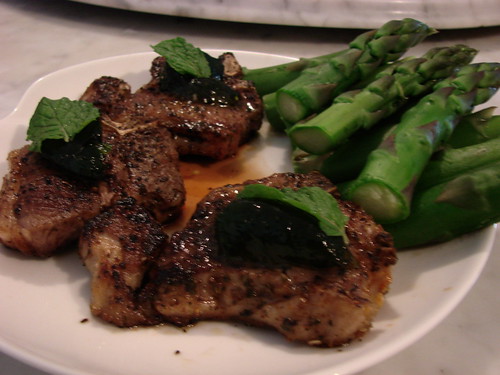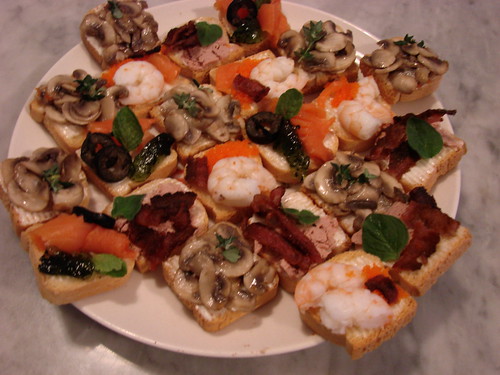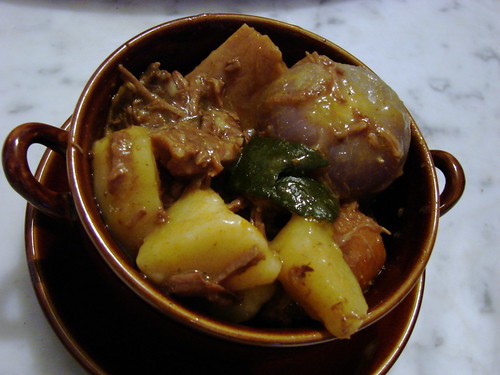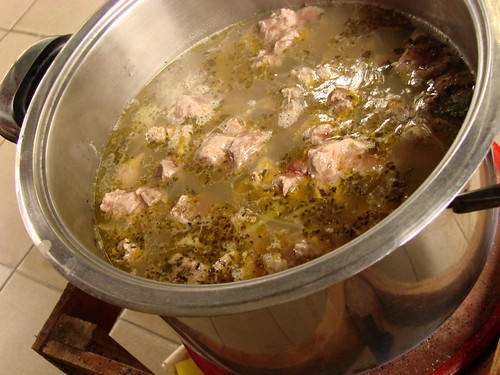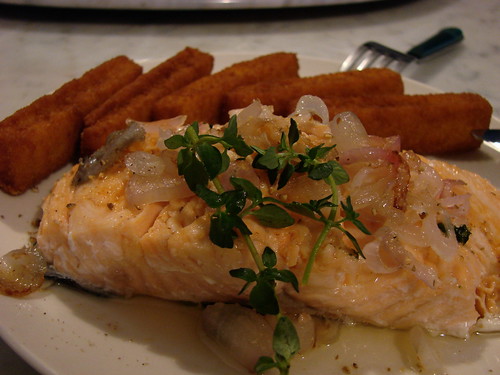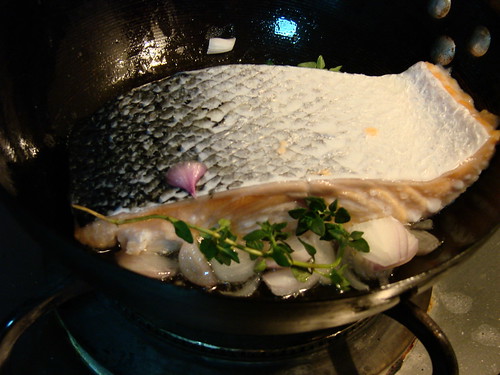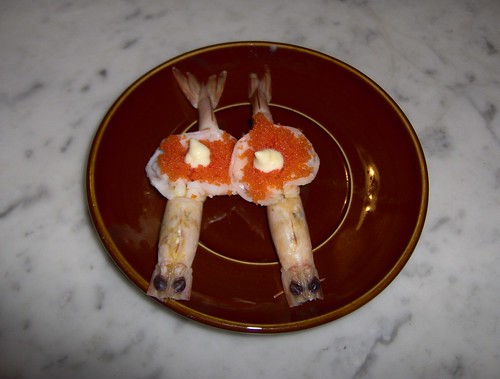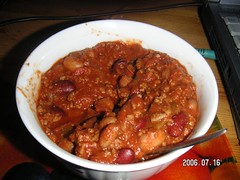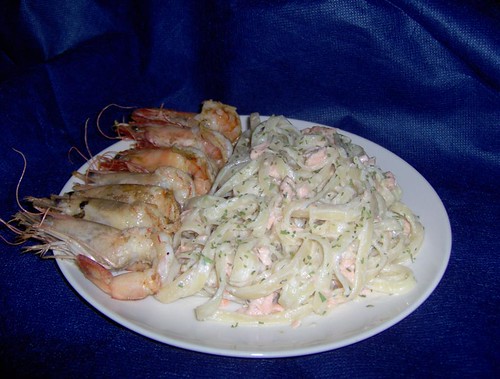Slow-cooked quail with grilled white asparagus and Jus of saffron and red wine
History:
This was quite the culinary adventure, and really fun as well. The birthday gang friends trooped over to my place on 3 March 08 for an early birthday cheer and brought their own food too. Just 2 weeks ago I was thrilled to chance upon the very seasonal white asparagus and decided to design a dish just for the asparagus. In that same shopping trip, I saw some quails in the grocer's freezer and that really set the stage for it. There's just 1 little problem though of marrying the ingredients and making the dish work. White asparagus has a very mellow flavour, while quails are after all game birds - I can only describe the flavour as "gamey", like what you'd taste with wild boar or venison. And though using them in the same recipe will not clash, something needs to be there to really tie down the dish as a whole. Inspiration for the Jus came from a show Yx and I watched together - "No Reservations" starring Catherine Zeta-Jones with her Saffron Quails. So there you go - the concept.
Quails are small, rather skinny birds that can easily become dry and overcooked. I was recently enthralled by a cooking method, sous-vide. Unfortunately, I have neither a water bath nor a vacuum machine, so the next best solution would be to slow-cook the birds. This recipe takes a good 2 hours in total, so set aside plenty of time for an enjoyable afternoon of cooking!
Ingredients: (makes 12)
- 12 Medium quails - 150-180 grams, available frozen
- 24 White asparagus - washed and peeled, with bottom 1/2" of stem removed
- Oven bags
- Fresh thyme
- Streaky bacon
- 1 Lemon
- Olive oil
- 2 tablespoons dried tarragon
- 2 tablespoons dried basil
- 2 large onions, diced
- 300ml Dry red wine
- 1/3 cup cooking sherry
- 1 tablespoon Saffron
- Salt & pepper to taste
The method:
Quails- Preheat oven to 150C
- Remove necks (save them for making the sauce), rub salt generously inside and out. Wash quails thoroughly, removing any remaining viscera such as the lungs as these can add very funky - and not necesarily pleasant - flavours to the bird.
- Immerse in a solution of brine for 20 mins.
- Mix half the diced onions, olive oil, terragon and basil. Stuff into cavity of each quail and stuff in half a rasher of bacon.
- Place into oven bags, arranging the quails in a nice position. Pop into the oven for 10 mins, then turn off the heat. Allow to slow-cook in the oven thereafter (with heat off) for 1 hour.
- Remove from oven bags, and arrange on top of a layer of oiled aluminium foil. Turn up oven heat to 250C. Drizzle juice of 1/2 a lemon on each quail, pop back into oven for 5 minutes.
- Reserve any remaining juices for the Jus.
Asparagus- Bring water to a vigorous boil in a pan, and cook asparagus for 3 minutes until slightly soft. Drain.
- Bring to high heat in a skillet, add 1 tablespoon butter, and sear the asparagus spears quickly, about 1 minute.
Jus- In a large pan, add 2 tablespoons butter and sear 4-5 rashers of bacon until slightly crispy. Add the juices reserved from the quails, the remaining half of the chopped onions and quail necks. Simmer for 10 minutes then strain.
- Add cooking sherry, red wine and a generous amount of saffron. Whisk in starch solution, then reduce the jus to a slightly thick consistency. Add generous amounts of salt to balance out bland quail flavour.
To serve, spoon out Jus on a place, and arrange quail and 2 spears of white asparagus. Sprinkle with leaves of fresh thyme and some dried tarragon on the quail. Accompany with a full-bodied red wine.
Cost and materials:
12 Quails - $70 (from greengrocer.com.sg)
24 White asparagus - $24 (Cold Storage, very seasonal. In fact, almost annual.)
200g streaky bacon - $3.50 (Cold Storage) or $15/kg from Greengrocer
Fresh thyme - from my own garden. Can be bought from Cold Storage/Seng Siong for about $2 per packet. A little goes a long way, so be prepared to use it for the rest of the week, or freeze it to keep!
Dried tarragon - from fridge stock. Ranges from $4-6 at Cold Storage. Once again, a bottle this lasts forever so it's a great investment.
Saffron - from fridge stock, bought from Dubai Airport (hmmm...). Costs about $10 from Cold Storage for a tiny bottle, but that's just about the best you can easily get. I would recommend dashing it all and buying a good-quality product online if possible.
Lemon - $0.50
Cooking sherry - $5 (Cold Storage)
Oven bags - $5 (Cold Storage)
Red wine - from fridge stock, but you can use any low-end wine that costs $20 or so.
Total: $144 for first batch ($12 per person) or $100 for subsequent batches ($8 per person)

